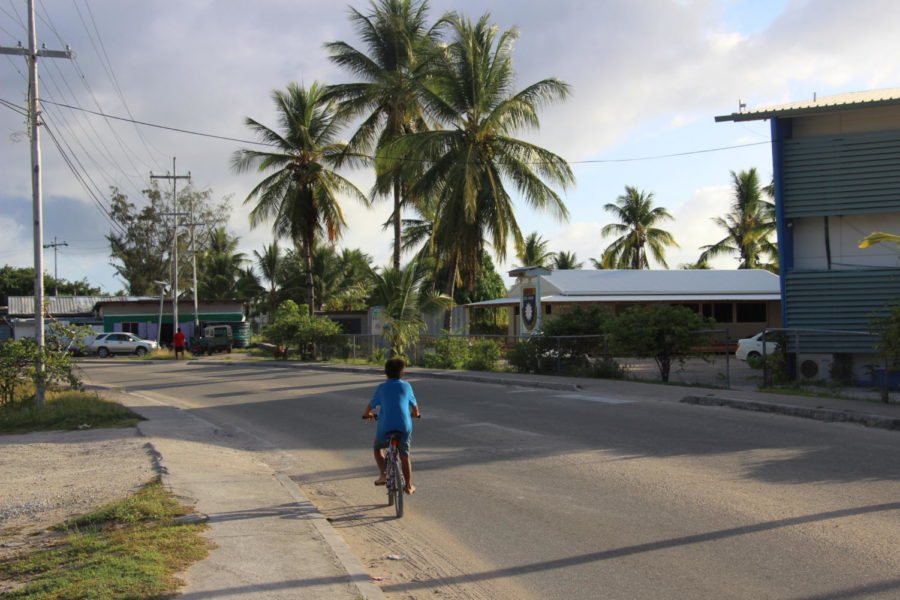Nauru: The Phantom Island of the Pacific
As the world’s least visited country, the remote island nation is a paradise tarnished by human development, slowly but surely fading into nothingness.
A child rides his bicycle outside of Nauru College through the Island Ring, the nation’s main road. The ring circles the entire island and has a circumference of 17 kilometers.
There’s something special about islands.
As Charles Darwin once described the Galapagos Islands in 1835, islands are essentially the living laboratories of evolution. From finches to tortoises, island species adapt little by little to life in isolation, managing to thrive and undergo gradual yet remarkable transformations.
Humans are no different. More than 730 million people, or approximately 11% of the world’s population, live on islands like Great Britain and Java. Diplomatic and economic ties with the rest of the world have allowed island inhabitants to strengthen their trade linkages and develop methods of self-sustainability. Smaller islands, on the other hand, have not been so lucky.
Nested in the South Pacific Ocean, around 1,800 miles northeast of Australia, is an 8.1 square mile island named Nauru. As the third-smallest and least visited country in the world, it was first settled by Micronesians and Polynesians nearly 3,000 years ago, and since then has been colonized by various foreign powers throughout the 19th and 20th centuries.
From first being annexed by Germany in 1888 to most recently being occupied by Japan during World War II, Nauru was not granted independence until 1968. Since then, the Nauruan population has grown at a slow and steady rate, from less than 1,000 in 1900 to more than 10,000 today.
On a global scale, core and periphery countries are the two types that make up the world: core countries have a chokehold over the world economy, production, and trade, whereas peripheries, which make up the developing world, provide the core with the necessary labor and materials to prosper. Unlike Great Britain and Java’s opulent triumphs, however, Nauru’s distance and size in relation to the rest of the world have rendered it a victim of this globalized core-periphery model rather than a beneficiary.
The Paradox of Plenty
Nauru’s title as ‘Pleasant Island’ and the once-wealthiest country in the world in the 20th century came from a somewhat amusing origin: bird droppings. Also known as guano, the excrement of seagulls collected over thousands of years, forming a rich phosphate deposit spanning over four-fifths of Nauru’s surface.
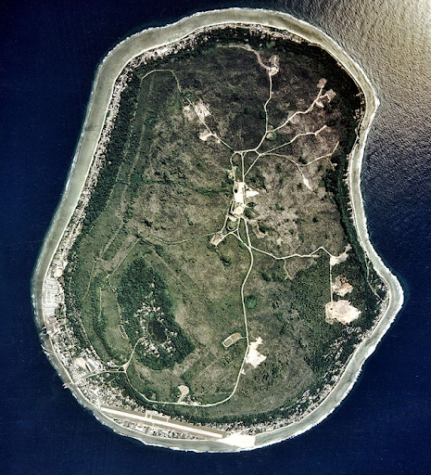
The high-grade phosphate ore rapidly brought acclaim to Nauru’s development, fueling the Western world’s interest in the Pacific nation. While Germany first gained Nauru as its official colony through peace negotiations in 1906, it rapidly lost control after World War I, where the Treaty of Versailles forcefully demanded German territorial concessions. Nauruan lives were essentially tossed back and forth between European countries as a political instrument, rendering any local resistance ineffective. Ultimately, the League of Nations granted Great Britain, Australia, and New Zealand — collectively known as the British Phosphate Commission — the right to take over unregulated resource extraction completely.
Over the last century, Nauru has produced more than 43 million tons of phosphate, 80% of which has been extracted through a process called strip mining. This practice, which involves removing the surface layer of soil and rock to reach buried minerals, has left nearly 90% of the island’s surface largely barren and filled with jagged limestone pillars, unable to fertilize and sustain agriculture. Silt and additional phosphate runoff contaminated surrounding waters, destroying marine life and worsening pollution.
This vicious cycle came to a temporary halt in 1942, when Japanese troops started to invade and occupy the island during World War II. After a series of labor camps, executions, and mass drownings, more than a quarter of Nauruans had died, with less than 600 survivors. To prevent further brutality on the island, the United Nations gave Australia official trusteeship in 1947, widening its control from resource rights to government administration as a whole. Outside of mining, Australia began to build additional infrastructure, expand trade, and mechanize production. Despite the short-term recovery, however, Australia continued to erode Nauru’s resources, with infrastructure primarily targeted toward easier access to phosphate and financial gain.
When the Nauruan government finally purchased these resource extraction rights and declared separation from Australia’s rule, they gained autonomy over their phosphate revenue. The economy boomed, and thus began lavish lifestyles and imports of luxurious foreign goods — the classic story of rags to riches. Residents were disincentivized to keep their jobs in the already-flourishing economy, and the parliamentary government soon became corrupt, mismanaging investments and revoking taxes.
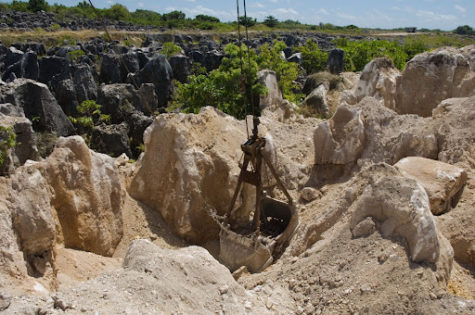
But just like all other natural resources, phosphate reserves are finite. Nearing the end of the 20th century, the amount of phosphate on Nauru became so limited that it could no longer sustain its population — in effect severing its economic lifeline.
The island soon became a haunting environmental wasteland. “Almost all of Nauru is missing, picked clean, right down to the coral skeleton supporting the island… [it’s all] blindingly white,” said journalist Jack Hitt when visiting the country.
In the 1990s, scientists declared the island uninhabitable. Although the governments of Great Britain, Australia, and New Zealand attempted to cover the costs of relocation and infrastructure development as an obligated token of apology, they were met with resistance. Nauruan citizens instead opted to stay on the island, grasping onto any hope that their home could be rehabilitated and their culture would not be lost.
“Nauru has been exploited because of Western supremacy and imperialism,” said Ms. Diane Steiker, AP Human Geography Teacher and Model UN Advisor. “It is essentially beholden to the core countries and all their human rights abuses, and once in the notion that the standard is an industrialized one, it can be very hard to reverse the damage.”
A Looming Public Health Crisis
Phosphate extraction from the Western world was the catalyst for Nauru’s trajectory toward deterioration. Ever since, the island’s inability to produce and sustain agriculture has translated to a constant dependency on foreign aid from the very countries that exploited its resources.
Malnutrition runs rampant on the island, with local cuisine consisting of white rice, instant noodles, soda, and other canned foods. Obesity and Type 2 diabetes are widespread, affecting over 71 and 40 percent of the population respectively — at four times the global rate. Coupled with alcohol and tobacco abuse, Nauruans must fight to see their 60th birthday.
“It’s around them everyday. Young parents are dying of heart attacks,” said anthropologist Amy McLennan of Oxford University, who specializes in food systems and obesity emergence and recently completed a study on these issues in Nauru.
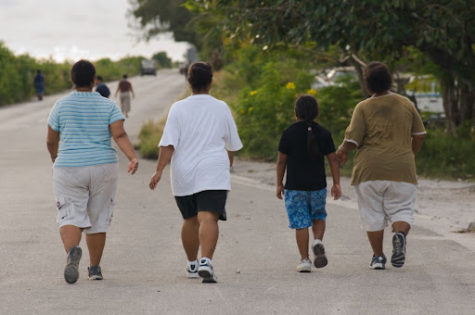
In an attempt to combat the growing obesity among its citizens, the Nauruan government promoted daily three-mile walks around the airport perimeter. With the entire island being four miles wide and five miles long, exercise was more encouraged than ever.
The problem, however, lies not in the lack of exercise but within trade linkages that have enforced a sense of toxic dependency. Nauru’s bankruptcy in the beginning of the new millennium meant that it was unable to import high-quality ingredients from core countries, and instead relied on cheap, pre-prepared food.
Yet somehow, what is slowly leading to Nauruans’ demise is also the only thing that’s keeping them alive.
Australia’s Refugee Backyard
In an effort to increase income and decrease poverty, the Nauruan government accepted Australian refugees that other countries refused to take in. Visa fees aided in generating revenue, as Australia pays an annual fee — nearly $3.4 million —for every refugee sent and detained in Nauru, totaling over $1.4 billion to operate the entire detention regime.
Since 2001, Australia has used an “offshore processing” policy to build illegal detention centers on Nauru and Papua New Guinea, not only as a form of punishment for current refugees but as a signal to dissuade those potentially seeking asylum in the future. Conditions were appalling, travel documents were seized, and sentences were indefinite. From the very beginning, these detention centers were built to destroy people’s hope.
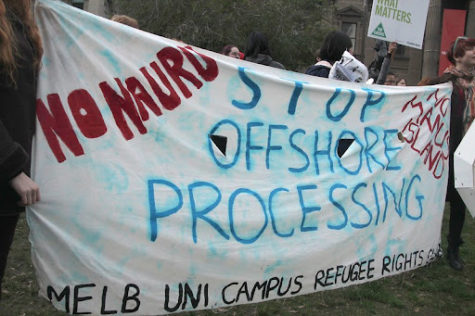
“I think larger countries take advantage of Nauru because they not only can avoid retribution from larger countries, but also backlash from their general supporters — most of whom could not even locate Nauru on a map,” said Manu Bosteels ’24.
From refugee riots to hunger strikes to suicides, Australia’s human rights abuse was inevitably uncovered by the Western media in 2016, in turn receiving outrage and condemnation from the rest of the world. As of June 2016, a total of 442 asylum seekers and refugees were placed in the Nauru regional processing center, 49 of whom were children. Since then, thousands across Australian cities have protested against offshore processing, denouncing their government for using lives as a political toy.
“A media visa is a theoretical possibility – at the inflated price of $8,000 an application – but requests from the Guardian and other independent media organizations, even for the visa application form, are met with stony silence,” wrote journalist Ben Doherty in a 2016 The Guardian article.
While Australia concluded its detention regime with Papua New Guinea in 2021, it is set to continue such practices on Nauru with no end in sight.
One Day We’ll Disappear
Alarmingly, Nauru’s elevation above sea level is 34 meters, or 112 feet, with the highest point being around 65 meters, or 213 feet.
According to climate change and human migration experts Koko Warner and Andrea Milan, a 2015 survey revealed that 40% of households on Nauru have already experienced rising sea levels in the past decade, with coastal flooding becoming much more frequent.
Despite being a nation rampant with instability, accelerated climate change may swallow the island before any solutions can be implemented — Nauruans are on the verge of being permanently trapped by the inability to migrate and adapt. Warner and Milan continue that in order for a country to successfully migrate in the face of worsening environmental conditions, there must be international structures and sufficient funding in place within the government.
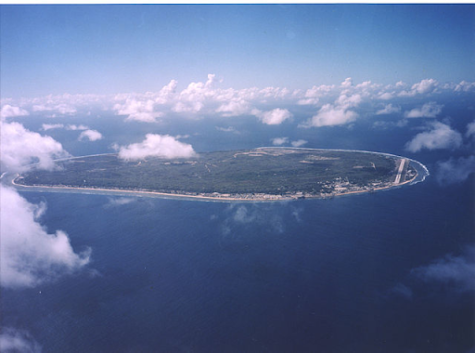
So, what can we do if the issues affecting Nauru seem to be out of human control?
Nauru is an island destroyed, but it is also a nation of resilience. Global human rights organizations like Amnesty International and Human Rights Watch have pushed for immediate transfers and aid to asylum seekers on the island, with local initiatives launching more targeted efforts to improve healthcare and living conditions in refugee centers. In 2017, more than 50 refugees were accepted in the U.S. for resettlement. These strides, optimistically, will cease the cycle of dependence on cash flows in exchange for refugee processing and allow the Nauruan government to focus on properly rehabilitating its economic mismanagement.
Combined efforts between today’s world leaders can mitigate the effects of climate disasters on an especially vulnerable nation, such as installing government programs to safeguard food security in a changing climate and stable employment abroad in case of inevitable migration. While we can’t turn back time to amend the scars of imperialism and greed, adopting a non-eurocentric worldview and recognizing the destruction of colonialism on a global scale is the first step to ensuring history does not repeat itself.
“Nauru has been exploited because of Western supremacy and imperialism,” said Ms. Diane Steiker, AP Human Geography Teacher and Model UN Advisor. “It is essentially beholden to the core countries and all their human rights abuses, and once in the notion that the standard is an industrialized one, it can be very hard to reverse the damage.”
Charlotte Zhou is an Editor-in-Chief for ‘The Science Survey.’ In addition to writing and editing articles, she constructs the online crossword and...

